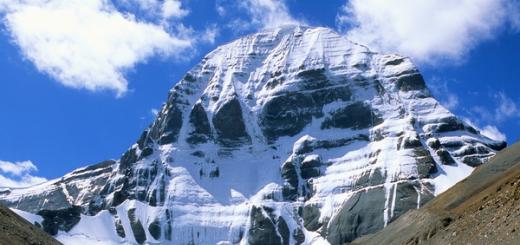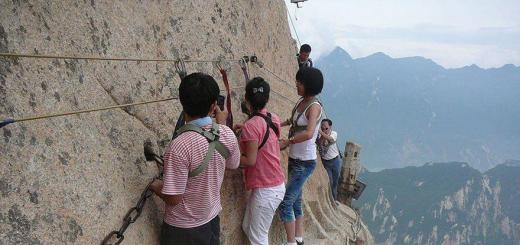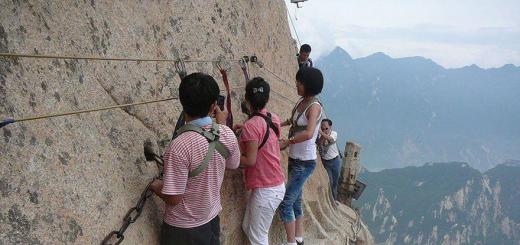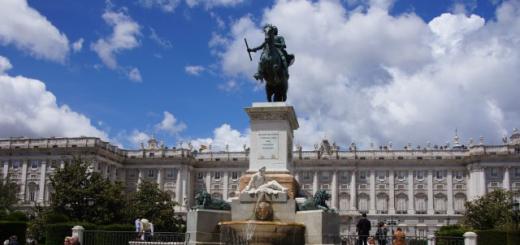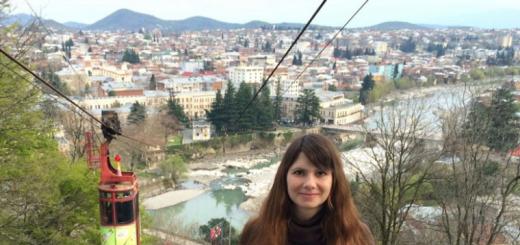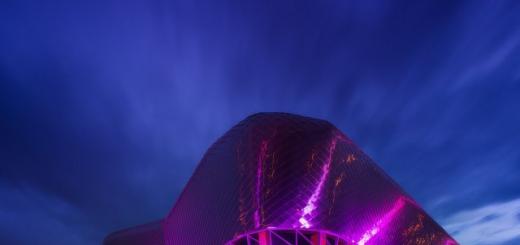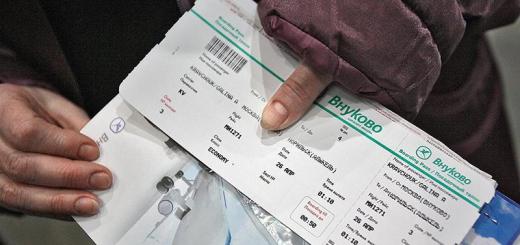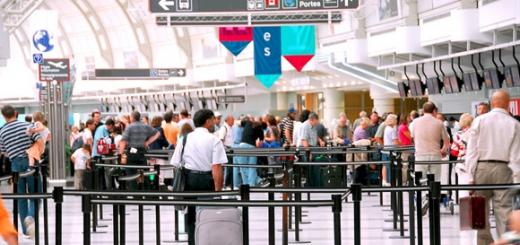Koper - the city in the south-west of Slovenia located in the 47-kilometer (29-mile) coastal zone of the country, in Istria, approximately five kilometers from the border with Italy.
This is the largest and economically developed city on the coast of Slovenia. In Koper, there is a single shopping port in the country, Sea Gate Slovenia, Luka Coper. In addition to cargo ships from around the world, the port takes many cruise ships. Tourism - the second most important article of the income of the municipality.
The city of Koper is officially bilingual, and both Slovenian and Italian languages \u200b\u200bare official.
Copher beaches.
In Koper there are two beaches, both municipal, free. The first is an urban beach. It is located between two marins, in close proximity to the port. The second, žusterna, is located 4 km east, on the opposite shore of the Seedla Bay.
City Beach Corger.
The city beach of Corger is located in the old town, small, just 100 m, well equipped. There are all the necessary beach amenities, parking, cafe, rescuer. In the area of \u200b\u200bGravel, concrete slabs. Further, a small park, where you can sit on the grass in the shade of trees, but at the rush hour, as a rule, everything is busy here. In the water of rocks, stones.
Water is clean, but the proximity of the port and parking for the yacht transparency does not add it.
Zhusterna Beach (žusterna).
The beach is concrete slabs and steps for descent to water, the bottom is stony. There is a playground, cafe, parking, toilet, shower. You can do diving, swim and fish.

The beach is owned by the nearby area of \u200b\u200bthe city. Immediately on the shore is the Water Park-hotel Zhusterna (žusterna) 3 * with pools and slides.
Attractions Kopua.
The main attraction of Kopuker, this is the old town, it is located on the seafront, Marina has a triangle of about 600 per 800 m. Medieval buildings, red tiled roofs, narrow streets, from this can be lost in time.
Some of the most interesting buildings of an old copper.
Pretorian Palace.
Pretorian Palace of the 15th century. It was built of two old houses of the 13th century, which were bound by the loggia, in the Venetian Gothic style. Palace is located on the city square. Today it contains management on tourism.
Assumption Cathedral.
Assumption Cathedral was built in the second half of the XII century and has one of the oldest bells in Slovenia (1333 years), executed by Master Jacob in Venice. From the top terrace offers a beautiful view of the Trieste Bay. In the middle of his painting, the sacred conversation written by Wittor Carpaccio in 1516. This is one of the best paintings of the Renaiss Age in Slovenia.
In addition, you can see the sights. Regional Museum Cokes, Church of Carmin Rotonda of the 12th century, St. Nazari's Cathedral from the 14th century tower - only more than 10 churches, monasteries and cathedrals. Up to thirty buildings of the Old Town are proud Palace Title.

Other sights of Cokes.
Zoo.
Located in Forecovka, Reserved Zone. Animals here live almost free. The park is equipped with a playground and a cafe.
Marina Koper.
A small pier on 75 berths for yachts up to 18.0 meters is located near the medieval center of the city and is the most northern harbor on the coast of Slovenia. Near Marina there is a good cozy restaurant in which you can delicious dinner, drink a glass of local tart wine, admiring on a mast mast mast on the sunset background.
Copher shops.
Since Koper is not only a tourist city, but also a large industrial center. A lot of souvenir shops, delicacies shops here are adjacent to large network supermarkets, such as Mercator, Spar or Leedle. Moreover, if the first is mostly located in the old town and on the coast, then supermarkets are less evenly placed throughout the city.
There are in Koper and large shopping centers that are not inferior in size and assortment Italian shops. For example, a multi-storey Internet. This is one of the largest stores in the city. Everything is sold here. From large household appliances and designer clothes to all sorts of kitchen trifles.
A little story.
Koper began as an ancient settlement, built on the island in the southeastern part of the Bay Koper in North Adriatic. In ancient Greece, the city was known as Agid (city of goats). Later, he became known for Capris Latin names (Greek Copros), Caprea, Capre or Caprista, of which the modern Slovenian name appeared.

In 568, residents of the nearby Trieste fled to Koper because of the invasion of the German tribes. In honor of the Byzantine Emperor, Justinian II, the city was renamed Justinopolis. Later, Justinopolis was under the Lobbard and Frankish dominion and was briefly busy with Avarians in the 8th century.
From the VIII century, and perhaps even from the 6th century, Copher was the residence of the diocese. One of the Bishops of Coke was Lutheran Reformer Pierre Paolo Vergeryo. In 1828, he was united in the Diocese of Trieste. After World War I, the Copher was under the rule of Italy, and from 1954 and until 1991, when Slovenia gained independence, was part of Yugoslavia.
Climate.
In Koper, a wet subtropical climate, a lot of precipitation, even in the dry month. The average temperature in Koper is 14.4 ° C (57.9 ° F). The average annual precipitation is 1056 millimeters (42 inches).
How to get to Koper.
Koper is a fairly large city for Slovenia, it is connected by bus routes and railway communications not only with the cities of the country, but also foreign centers.
Buses go to Ljubljana from Kopua, Trieste, Zagreb. There are still flying flights connecting Northern Italy with Croatia. Distance to Ljubljana 106 km The bus overcomes one and a half - two hours, you will cost about 5 - 15 euros. Number of 7 - 8 flights of various companies. The train also goes to the capital. It is sent 4 - 5 r. per day, located on the way 2.20 - 2.30 hours and stands ok. 10 - 20 euros. Well, the most expensive option - a taxi costs about 120 EUR.
Portorož, Isola, Piran Koper and Trieste connects local lines of Arriva, whose buses run along the coast with a frequency of 0.5 - 2.5 hours in the morning and to the evening. The price depends on the distance. Approximately (euro): Portorož - 2.70, isola - 1.80, Piran - 2.70 and Trieste - 3.10.
To get to Koper by plane, you can use the airports of Trieste (65 km), Ljubljana (127 km), Pula (100 km). And from there to reach Koper, using the bus, taxi or taking car rental.
Railway station and bus station are near, in the southeastern part of the city, 15 minutes walk from the historic center.
Coper on the map.
Copher on the Slovenia map is located on the very northern small, just 47 km of the coast site of this Balkan country, on the shore of Koper Bay Bay, just 13 km from the border with Italy and 17 with Croatia.
In the northern part of the city, at the mouth of a small river there is a shopping port of Luka Coper, the south of the cruise ships, and the south of the Old Town, from the East and South surrounded by residential quarters. Between the southern quarters, Markovovets, Seedhel, Zhusterna and the Old Center deeply in Sushi, the bay of Seedel, with the beach and arrivals of Marina located in it.
Read more: Slovenia resorts:
Coper (Ial. Capodistria) - the largest Slovenian seaside city, the capital of Slovenian Istria And the main seaport of the country. Like Venice, the old urban core stores a number of interesting testimonies of history. Built once on the island, in the XIX century it was connected to the land of the dam and gradually completely agrees with the continent. In Italian, the name of the city sounds like capodistria, which means "the main city of Istria".


The city is located in close proximity to the Italian border and the city of Trieste (), and is associated with the new modern highway with the capital of the country of Lyublany, as well as coastal roads with Italian Trieste and Croatian Istria. Also in Coper there is a railway station, but, compared with car and sea transport, the railway is used very weakly.



In Koper, there is the only one in the trading port, where ships arrive with cargo from the Middle East, Japan and Korea.


Hotels Copera Pretty cozy, and the administration of some even trying to create conditions approximate to homemade. It is comfortable to relax with your family, since everything is provided for the convenience of children, for example, as entertainment in one hotel, your child will be offered a pony riding, and in the other you can rent bicycles. If you are a lover of outdoor activities, you will perfectly spend time in the local water park, the pools of which occupy the area more than three thousand square meters. There is a SPA center here, in which you will be offered various weight loss programs and for relaxation and good mood, massage and lymphatic drainage.


In the past times, Coper was on the island with the strange name of the Goat, and by 1825 the island connected with the mainland, but so far, giving the tribute tradition, the city is divided into the mainland and island.


The mainland is a modern city: the houses are high here, and the buildings are close. The island part has a completely different appearance: cathedrals, old houses with tiled roofs, in whose architecture is clearly visible. The influence of Italian traditions. This is quite understandable: Slavs settled here in the 8th century, century later they set close ties with the Venice Republic, and by the 13th century, the copper was attached to Venice. As it often happens, Venetians, protecting the copper from external enemies, gradually became the full owners of the city. Hence the Italian style of architecture, kitchens, music. Even the language here is two full: Italian and Slovenian. 


Attractions Kopuker
The city has survived many monuments of the period of the Venetian Republic, very original and interesting. The most famous building in Coper is the Pretoria Palace, he was built in 1464 in the style of Venetian Gothic, located on the central square of the city TRG. Opposite the Pretorian Palace - the Palace of Loggia, which houses the art gallery, which has a rich collection of the 15th century paintings, and modern, very beloved cafes.



Palaces of Armerigia, Totto, Belgrongs belonged to once representatives of noble Venetian families, and today they are a real decoration of the city. Koper and the Copyrot Cathedral of the Assumption of Our Lady, which was built in the 15th century. The main shrine of the Cathedral is the tomb of St. Nazaria, the patron saint of the city.





The oldest old building in the city is the ascension rotunda, which was built in the 12th century.



One of the most attractive sights of the city is a zoo. It is not only a fleet of entertainment, but also a fairly famous research center. The zoo is huge, a variety of animals contained in it are very large, so many tourists showing interest in the animal world, often choose the place of their rest Coper: there are many opportunities to watch the habits of various animals.



Interested in Koper and for lovers of outdoor activities: a huge modern water amusement park offers many attractions on every taste and age. For a long time they chose this city and lovers of mountaineering: in the vicinity of the city there is a lot of sheer rocks, on which climbing skills can be counted, and at the same time admire the beauties of the Adriatic coast.


.jpg)
.jpg)
Another factor that makes the city attractive not only for beach-stay lovers are numerous choral singing festivals that are systematically held in the city. One of the most famous - Primorsky Summer Festival - every year many musical teams from Slovenia and other countries, as well as viewers who receive the true pleasure of this bright holiday.


The main seaport of Slovenia is the old city of Koper is located in the south-west of Slovenia on the Istria peninsula. Copher arose during antiquity - a Greek settlement of Aegida was located here. During the Roman Empire, the city was called Capris, and his heyday was reached, entered into Venice in the XIII century - it was then that he turned into the most important port and the trading city of Istria Peninsula.
History
In the time of the Venice Republic, the Coper began to be called Caput Histriae, which means "the main in Istria". In Italian, he is also called Capodistria - "Head of Istria". After the collapse of the Venetian Republic in 1797, the Koper was captured by Austrians, and in 1918, together with all the peninsula, he departed to Italy. For a long time, the Koper was located on the island, where shepherds graze sheep herds. Only in 1825, the island of a bulk curtain attached to the mainland, however, the division on the island and the mainland remains now. The island parts are concentrated monuments of medieval architecture, seaports and beaches, while "on the mainland" is a modern city with dense buildings and high buildings.
After World War II, the Koper entered the "free territory of Trieste", which was controlled by Yugoslavia, and in 1954 finally became part of Yugoslavia. In 1991, the city became part of the independence of Slovenia, however, and today the Italians and Italian languages \u200b\u200blive in here the second official language.
The city's attractions

At the central square of the city (Titov TRG), the Pretorian Palace built in 1464 is the most famous building of the city. Opposite him, on the other side of the square - the palace of the loggia, it contains a collection of works of art. It is also worth seeing the houses of the Venetian nobility - the Palaces of Armerigia and Totto, and the oldest city building - the Rotunda of Ascension, the story of which originates in the XII century. Among the most important sights of Kopra also - the Cathedral of the Assumption of Our Lady. In the cathedral I am kept the tomb of St. Nazaria - the patron saint of a copra.
Copher today
Today, the copier is the largest seaport on Adriatic and the Logistics Center, through which a significant part of European cargo turns. The port operates 12 terminals, and the volume of freight transportation in 2014 exceeded 19 million tons. Costa Favolosa and Costa Soncordia cruise liners come to the port, hence the route maritime transportation to Trieste and Venice.

Famous Koper and his football team. FC "Coper" belongs to the strongest League of Slovenia, and the famous player of the young Rudona is a native of a copra. Also, the famous painter Wittor Carpaccio, Tennis player Andrei Klepacho, and the singer Tinkar Kovach, who represented Slovenia on Eurovision. Many tourists come to Koper to visit musical events, especially popularly popular with the seaside summer festival.
Slovenia is unique, in its geographical position, country. Last skis with alpine vertices, you actually immediately fall on the beaches of the Adriatic coast. The cities in the Slovenian coast are not so much, and the main among them is a copier (Sl. Koper, IT. Kapodistria). Despite the fact that the population of the city is only about 25,000 people, Koper is the largest Slovenian city and port on the coast of the Piran Bay.
Until the XIX century, Koper was located on the island, in antiquity wearing the name "Goat". In 1825, the island of embankment joined the mainland, but the city is still, according to tradition, they are divided into old - "island" part and a new one - "mainland".
 Koper Island
Koper Island The "mainland" part is a modern city with its infrastructure, lively life and high buildings. In the "Island" part of the copra, a completely different picture: the time here is frozen. Vintage houses under the red tiled roofs in Italian style, small narrow streets leaving to the sea - all this reminds of the centuries-old stories of a copra that takes its beginning since the times of ancient Greece.
 Lapidarium in Kopre
Lapidarium in Kopre History Kopra
In those days, the city was called Aegida (goat-city). Later, when mentioning a copper, such names are pop up as: Capris (Greek. Copros), Caprea, Capre and Caprista. In the chronicles, it is mentioned that in 568, N.E., Roman citizens of the neighboring city TERgeste. (Trieste), due to the invasion of the Huns, fled in Capris. Byzantines who captured Koper, in the VII century, renamed it to Justinopolis, in honor of his emperor Justinian II. .
The name of the city of Tergeste went from the Slovenian word trg - the market square. So Italian in this (now) Italian city is not so much!
 Old city center
Old city center In many respects, the medieval history of the city relationship with the Venice Republic is determined. By 932, among all the cities of Istria, Koper became the chief partner of Venice, observing the neutrality in the event of the War of Venice with any of the cities of Istria.
This alliance brings coper big benefits. The real economic takeoff The city is experiencing during the times of crusades, when the demand grows sharply on its agricultural products: oil, wine, fish and salt. Maritime trade brings big profit. In the XI-XII centuries in Koper, as in other seaside cities, the oligarchic system of the Board is consisted: with externally republican form, the authorities belong to several families of noble patrician.
 Loggia Palace. Venetian architecture Kopra
Loggia Palace. Venetian architecture Kopra Thanks to its sharp economic growth, the copier is stronger, and in the end it is decided to conflict with Venice. In 1145, the Union of Three Cities of Istria - Pula, Kopuker and Isola, challenges the Venice Republic. The result turns out to be deplorable: the defeated cities are forced to bring a "fidelitate" (Facere Fidelitatem) to the Venetian lady. After this conflict, the copper power has become extremely cautious: the city has provided military assistance to the Venetian fleet, and in conflicts of Venice with other cities, invariably taking the direction of the republic.
In 1182, as a reward for his loyalty, the Copper receives the right to the monopoly production of salt from Venice on the entire coast of Istria, for a period of 29 years. Salt mining had paramount importance in those days, and this helps to strengthen the status of a copfer, as the central city of the Istrian coast. Over the centuries, the development of salt has brought a great economic benefit and was discontinued only in 1911.

In 1380, the Koper is subjected to a cruel attack of the Genoese (medieval Genoa). Genoa's troops rob the city and take jewelry and sacred relics, including the power of St. Nazaria - the most severe punishment for the medieval city (returned in 1423) but even these small attacks cannot stop the economic clock. In the XVI century, Koper is considered the largest city-port of North-West Istria. In the middle of the XVI century, his population has about 10 thousand inhabitants. Unfortunately, more than 50% of the population dies during a terrible epidemic of plague, which rages in Europe in 1553-1554.
Exiting until the end of the XVIII century, the Venetian Republic dies under the onslaught of Napoleon's army. In 1797, French troops include the Koper, and the city becomes first part of the Italian kingdom, and then part of the Illyrian provinces (1809-1813). After the fall, the Napoleonic Empire Coper falls under the power of the Austro-Hungarian monarchy, in possession of which and remains to the First World War.

In 1918, Koper moves to Italy, and after World War II, in 1947, joins the Socialist Federal Republic of Yugoslavia, as part Free territory Trieste. When in 1954, the free territory of Trieste officially ceases to exist, the Koper becomes part of Yugoslavia, already entering the Union of Slovenia. By this time, most Italians who lived in the city leave the city, moving in Italy.
What to see in a copre
Coper is the city of ancient history and the newest tourist infrastructure. Walking around the old, medieval streets of his island part, immediately pay attention to the enormous influence of Venetian architecture. Here everyone can see wonderful evidence of different cultures and eras. All inscriptions in the city are made in Slovenian and Italian, and in each building there is an Italian flavor.

The oldest poker decoration is the ascension rotunda, built in the XII century. The church served as a place to collect and bless the warriors departing at war. Inside it hangs one of the best paintings of the Renaissance era in Slovenia, written by an Italian painter Wittor Karpaccho (Vittore Carpaccio) in 1516 and here is one of the oldest bells in Slovenia (1333g), poured by the Venetian Master Jacob.
In Koper, many very original and interesting monuments of the Venetian period have survived. One of these monuments is the Pretoria Palace, built in 1464 in the style of Venetian Gothic. The palace is located on the central square of the city - Titov Square (Titov TRG), and in front of him the palace of the loggia, in which the art gallery is located today, with a rich collection of paintings by the XV century.

Here, near the Cathedral of the Assumption of Our Lady, built in the XV century. It contains the main city shrine - the tomb of St. Nazaria, the patron saint of the city, whose power in 1380 and were taken out of the city with Genoese troops.

Built in the XVII century, the Belgramoni-Tacco palace (Belgramoni-Tacco) is one of the most beautiful baroque Palaces of Cokes. The palace has two names, because at one time, one of the members of the Belgramoni family, after the night lost his other family - Tacco. Nowadays, the Palace is located the Regional Local Lore Museum of Northern Istria. The amazing palaces of Gravisi Barababyanka, Brutti and Tatto, also belonged to noble venetian families, and on a par with many other historical buildings, serve today with a real decoration of the copfer.
 Belgrong Palace
Belgrong Palace Interested in a copper and for lovers of outdoor activities. In addition to pure urban beaches, a large modern water park offers its visitors a lot of attractions for every taste. In the vicinity of the city there is a lot of sheer cliffs, which have long been adorable in lovers of mountaineering, as well as a small airfield, offering all those who wish for fantastic panoramic flights over the Adriatic coast.
 View of the copper from the height
View of the copper from the height There are numerous chore singing festivals in Koper. One of the most famous is the Primorsky Summer Festival, which every year collects musical groups from Slovenia and other countries. From all over the world, spectators who receive real pleasure from the bright spectacle and from the city of Koper are coming to him.
In one of the albums, I already told that little part of the Adriatic coast belonging smallcountry Slovenia are four Small Town (okay - cities, I will not offend local residents). About two of them, piranets and a portor, I have already said everything.
In the queue isola and koper. Why did I decide to combine them in one album?. Each of the four towns has its own "highlight". Piran is the most famous (piransky bay) and popular in tourist gradations, the medieval city-museum under the open sky. Portorož, actually not a city, and the coastline, built-up with hotels, restaurants and other elements of rest infrastructure and entertainment. Koper (ITAL. Capodistria - the main city of Istria) is the largest of all - about 24,000 people of the population. And also, Koper is the main trading port of the country (sorry for the light irony, justice to admit - only). Finally, the isola is a small (about 10,000 people) of the town, which is located in this region Marina.
And if you forget about these "raisins", then the copper and isola have a lot in common. Using the famous journalistic stamp, I would say that isola is a copier, but only smaller ... Both cities initially expedited on the islands. Copher on the island of Goat, who in 1825 became the peninsula. And with isola ..., just some kind of "simplist". The island and the name was not there. "Isola" in Italian and there is a "island", which in the XIX century also turned into the peninsula. In its historical development, the city also walked As they say, "Nostril in Nostril". Without having achieved the championship in the XIII century in the city wars, they agreed to the patronage of the rich and strong Venice republic. Then these territories were under the authority of Napoleonic France, and were part of Austria-Hungary, and belonged to the pre-war italy , and included the composition of SFRA. Nowadays it is Slovenia. Cities have a lot in common. Driving along the coast, you will not immediately and you will not understand: where the copier ends, and where the isola starts.
Therefore, in the album, I try to show "unifying" moments, somewhat ignoring the differences and features inherent in these cute towns.
Of course, photos with kinds of Isola and Kopa was hardly produced by Furior when solving the puzzle "Find ten differences". Rather, the task should sound up to the opposite: "Find similar". This is what confirmation. Left - isola, right - Coper.  Here is the peninsula (Isola - Island, Ital.), Which in the XIX century it turned out of the island without a name. And on it the old part of the modern city of isola. Copher in such a compact form to remove unlikely to anyone.
Here is the peninsula (Isola - Island, Ital.), Which in the XIX century it turned out of the island without a name. And on it the old part of the modern city of isola. Copher in such a compact form to remove unlikely to anyone. 
 Yes, yes, this is part of the largest in this region, Marina.
Yes, yes, this is part of the largest in this region, Marina.  Entrance to the old part of the copier. He, the old Koper, is still more than an old isola. Here is the area with a fountain at the entrance.
Entrance to the old part of the copier. He, the old Koper, is still more than an old isola. Here is the area with a fountain at the entrance. 
 No, this is not a crossroads with traditional mockery of heroes: "Go rightfully ..." This is the beginning of the streets in the old isole. As it should be - all roads lead to the temple. Remember how the cult film T. Byabladze "Deception", blowing society at the beginning of the restructuring? Correctly - an elderly woman's question: "Why do you need a road if she does not lead to the temple?"
No, this is not a crossroads with traditional mockery of heroes: "Go rightfully ..." This is the beginning of the streets in the old isole. As it should be - all roads lead to the temple. Remember how the cult film T. Byabladze "Deception", blowing society at the beginning of the restructuring? Correctly - an elderly woman's question: "Why do you need a road if she does not lead to the temple?"  Isola. Church of St. Mauro (XVI century).
Isola. Church of St. Mauro (XVI century). 

 Differences in the sizes of the occupied territories of the copper and isola naturally affect the "sizes" of their main attractions. St. Mauro's church occupies almost the entire main square of Isola. By the way, the "Square" in Slovenian sounds surprisingly melodious - "TRG". So the Cathedral of the Assumption of Our Lady (XV century) in Koper, despite its impressive sizes, is located only on the part of the central square of TDG. (I do not know if this name is connected with the name Iosif Broind Tito).
Differences in the sizes of the occupied territories of the copper and isola naturally affect the "sizes" of their main attractions. St. Mauro's church occupies almost the entire main square of Isola. By the way, the "Square" in Slovenian sounds surprisingly melodious - "TRG". So the Cathedral of the Assumption of Our Lady (XV century) in Koper, despite its impressive sizes, is located only on the part of the central square of TDG. (I do not know if this name is connected with the name Iosif Broind Tito).  In the temple is kept the tomb of St. Nazaria - the patron saint of the city.
In the temple is kept the tomb of St. Nazaria - the patron saint of the city. 



 There are many other cult buildings in the towns. I can not specify the names.
There are many other cult buildings in the towns. I can not specify the names. 
 And this is the most beautiful building of Isola - the Palace of Babengi-del-Uli (18th century).
And this is the most beautiful building of Isola - the Palace of Babengi-del-Uli (18th century).  And this is the entrance to the patio of some palace in Koper. What exactly did not understand. But the feeling of herdness and tourist solidarity (everything, sweeping each other, tried to capture this object) did not allow passing by.
And this is the entrance to the patio of some palace in Koper. What exactly did not understand. But the feeling of herdness and tourist solidarity (everything, sweeping each other, tried to capture this object) did not allow passing by.  We return to TRG titles. The main administrative building of the city is Pretoria Palace (1464) for reference: "Pretor" is a state office in ancient Rome.
We return to TRG titles. The main administrative building of the city is Pretoria Palace (1464) for reference: "Pretor" is a state office in ancient Rome.  Loggia Palace (15th century). Next - some fragments of the finish of palaces built during the heyday of the Venetian Republic, under the comprehensive influence of which there were many years and a copper, and isola.
Loggia Palace (15th century). Next - some fragments of the finish of palaces built during the heyday of the Venetian Republic, under the comprehensive influence of which there were many years and a copper, and isola. 


 Well, these narrow streets - the business card of Italy in general and Venice in particular - make the seaside cities in Slovenia "Italian".
Well, these narrow streets - the business card of Italy in general and Venice in particular - make the seaside cities in Slovenia "Italian". 




 Where the pipes of the copper, and where is the isol ... no fundamentally. However, for tourists too.
Where the pipes of the copper, and where is the isol ... no fundamentally. However, for tourists too. 
 And these personnel for the "truth of life". Either - no money, or - hands do not reach, or - well, it is necessary to support the image of the old city ...
And these personnel for the "truth of life". Either - no money, or - hands do not reach, or - well, it is necessary to support the image of the old city ... 


 Park on the Embankment Isola.
Park on the Embankment Isola.  Park on the Kopuker Embankment.
Park on the Kopuker Embankment. 
 The port is the pride of the copier.
The port is the pride of the copier.  Marina Isola.
Marina Isola. 
 Modern isola.
Modern isola. 
 Today's koper.
Today's koper. 

